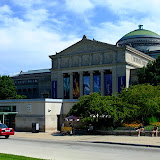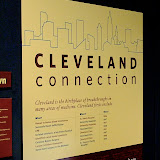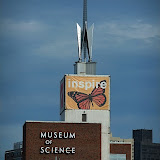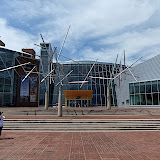 |
| Chicago Museum of Science and Industry |
The first thing I’d like to consider is how the collection is set out. Museums have a more difficult time of things because they need to balance the collection with the communication, and it’s a difficult balance to strike. It’s hard to avoid glass-case syndrome from the traditional museum ethos because collections need to be preserved rather than used to death. The way Chicago sets things out therefore is to start in the centre with big scientific principles and interactives, then as you head further into its labyrinthine three-storey building, you see more of the collection as a reward for your research.
Of course, as you head away from the centre you do find other excellent interactive rooms, but these are often difficult to find within the building and the signage, though good, is sometimes unhelpful. Nevertheless, there are excellent paper maps and each of the four stairwells is given a different colour to allow easy navigation. Inside these you can also find some old glass cases with exhibits, which gives the impression that they have been relegated here rather than displayed, that they needed somewhere to put them.
Technology has been the downfall of many a science centre, trying to use it as a silver bullet to amaze its visitors. Chicago does an excellent job of using technology wisely and to its best effect, both awing the visitor and also working extremely well to encourage interaction and education. By all accounts the museum has enjoyed a gigantic upgrade in its main areas, and the money has not been wasted. There was, for example, an interactive periodic table projected onto a desk, and you could react different elements together using pucks to ‘pick’ the elements up and slapping them together. A video would then play to show you all about what you have made. Ingenious.
A friend of mine commented that the museum is aimed more at children, with the science of storms exhibit for instance using weather to explain scientific principles, rather than explaining about storms themselves. It’s fair comment, but I can understand why the museum has chosen to do things that way. As communicators we need to use whatever methods we can to get over the basic principles of science in everyday life, and then we can go from there into more depth.
Science shows happen all over the place, including in the entrance hall or main crossroads of the museum. It’s a good way to grab people’s attention and a great space to utilise. The staff I spoke to were friendly and seemed to be well at home with the technology around them. Information panels were also adequate, although seemed to be more erring on the side of giving less information than more.
Overall, this museum is an excellent example for science museums the world over – given the money and space that Chicago enjoys, of course. Nevertheless, the experience is an incredible one, and is well worth a visit, either online or offline. Marvellous.







